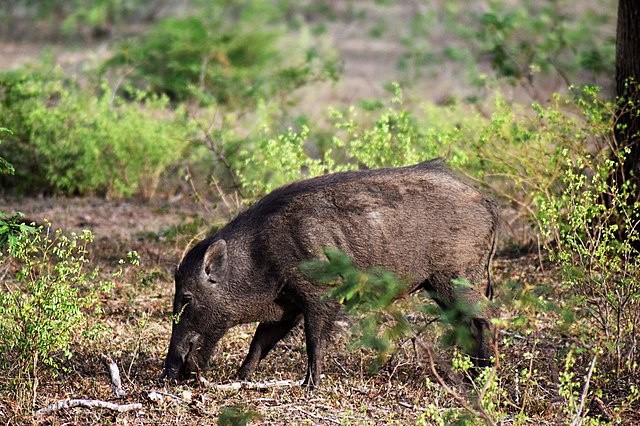All over the world, wild pigs (Sus scrofa) are considered a nuisance to the environment. The International Union for Conservation of Nature (IUCN) lists this animal as one of the worst invasive species due to their potential in damaging crops, harboring diseases, and disrupting ecological processes.

In South America, wild boar and feral domestic pigs were found to invade protected natural areas. They threaten hundreds of species in 54 different countries across the globe due to their ability to out-compete native species for food and in changing landscapes.
Wild Pig Expansion Across South America
According to Brazilian ecologist Clarissa Alves da Rosa from the National Institute for Amazonian Research, the increase of boars in Brazil and the Atlantic Forest has something to do with their interaction with human beings. She explains that wild pigs may supplement their diets with human-grown food, helping the animals increase and expand their population.
This supplementary feeding is obtained from crops, mainly corn and sugarcane, in a fragmented biome such as the Atlantic Forest. As a result, boars enjoy a perfect environment where they can take shelter and be fed with crops.
Human hunting is another contributing factor that increased the range of the wild boar. As humans get interested in maintaining the boar population, they transport and release the animals to areas where they were not previously present to secure hunting permits.
Impacts of Wild Boar Invasion
In a research published in the Journal for Nature Conservation, it was revealed that the increased presence of wild pigs across South America poses a threat to biodiversity hotspots and protected natural areas than previously thought. After assessing the suitability ranges of the boar species at various analytical levels, the researchers discovered that a significantly higher number of protected areas are either invaded or potentially at risk than shown in the previous study. Additionally, almost half (44.8%) of wild boar occurrences in the study were inside biodiversity hotspots.
Wild pigs are known for digging the soil using their long snouts. This activity creates large holes in the ground that remove important layers, like plowing the soil. Aside from the removal of crucial soil layers, wild pigs are also involved in different environmental impacts like uprooting native plants, preying on seeds and small invertebrates, and destruction of water springs.
It was also revealed that wild pigs are threatening hundreds of species in 54 countries worldwide. In a 2021 study conducted by Derek R. Risch and his team, it was found that 14 species of animals have been driven to extinction as a direct result of environmental impacts from wild pigs. In relation to this, a recent Intergovernmental Science-Policy Platform on Biodiversity and Ecosystem Services report discloses that wild pigs play a significant role in 60% of global and animal extinctions.
These examples demonstrate the damage caused by wild pigs in relevant areas for biodiversity conservation. It also stresses the importance of assessing the potential distribution of this animal species.
Check out more news and information on Wild Pig in Science Times.
© 2025 ScienceTimes.com All rights reserved. Do not reproduce without permission. The window to the world of Science Times.












